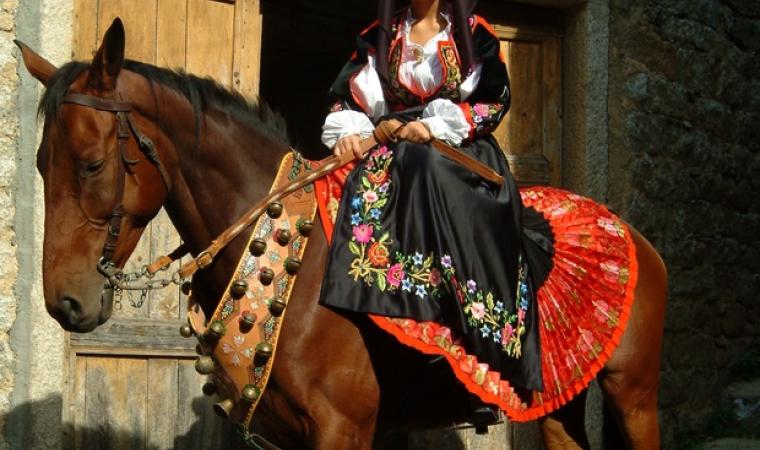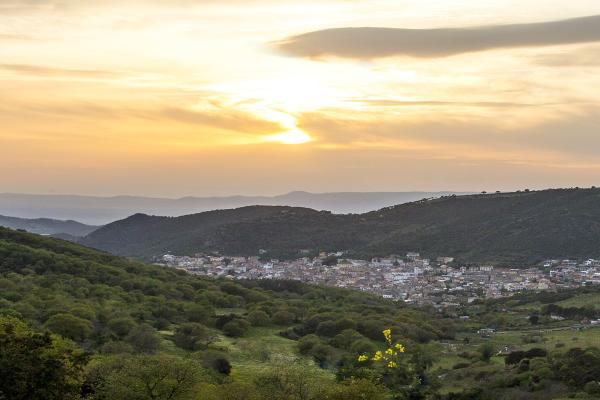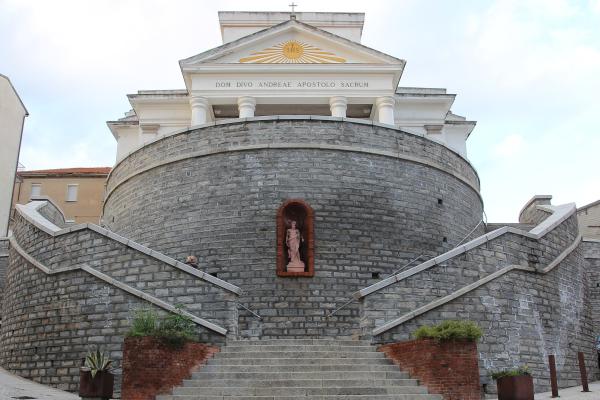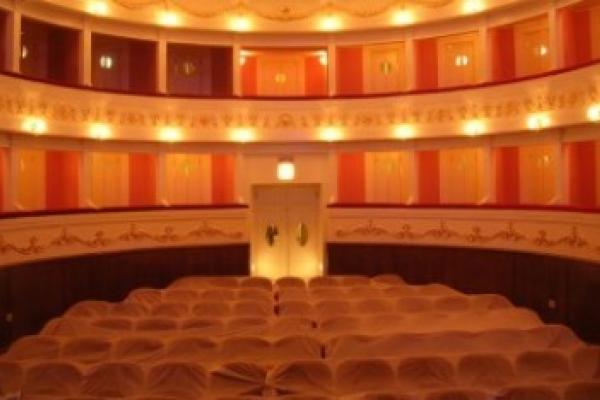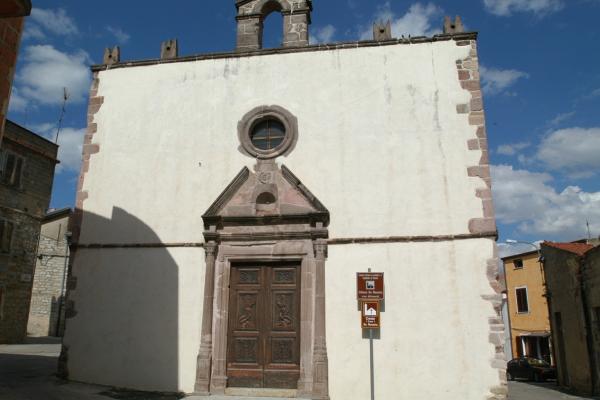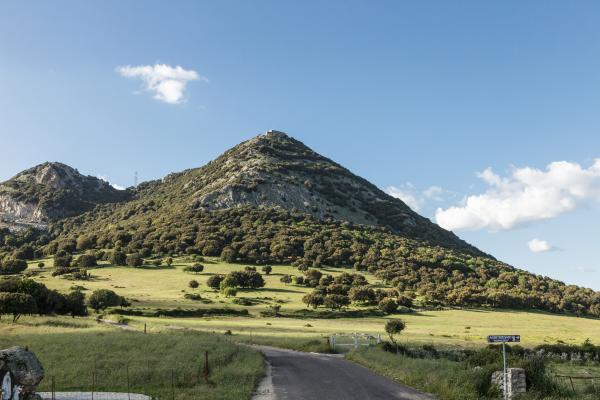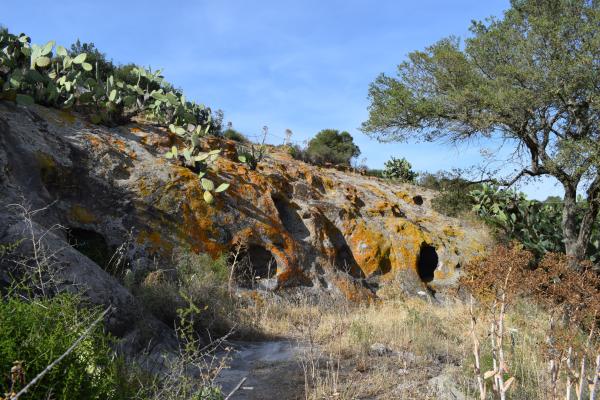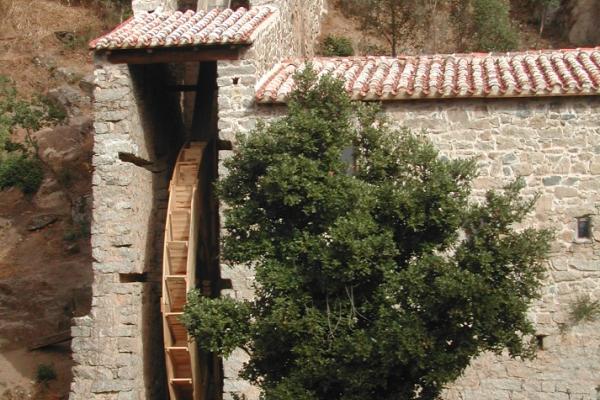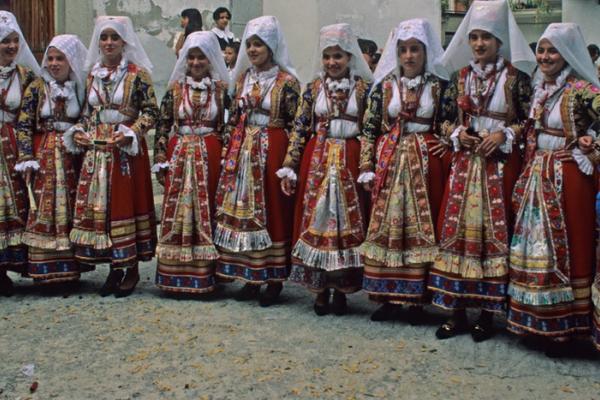On the top of the mountain behind it, at an altitude of 1,100 metres, is Sardinia’s ‘highest’ church, Nostra Signora di Gonare. Sarule is famous for its famous Marian sanctuary and sits at an altitude of 600 metres in the heart of the Barbagia di Ollolai. It is home to 1,700 inhabitants. Surrounding town are three calcareous peaks encircled by grey granite: Gonare, Gonareddu and Punta Lotzori. On a clear day you can see the sea both to the west and the east. The town is a farming and shepherding town, they make fine cheese that is famous and exported, just like their olive oil, made from olives that grow on trees hundreds of years old that dot the landscape.
On the top of the mountain behind it, at an altitude of 1,100 metres, is Sardinia’s ‘highest’ church, Nostra Signora di Gonare. Sarule is famous for its famous Marian sanctuary and sits at an altitude of 600 metres in the heart of the Barbagia di Ollolai. It is home to 1,700 inhabitants. Surrounding town are three calcareous peaks encircled by grey granite: Gonare, Gonareddu and Punta Lotzori. On a clear day you can see the sea both to the west and the east. The town is a farming and shepherding town, they make fine cheese that is famous and exported, just like their olive oil, made from olives that grow on trees hundreds of years old that dot the landscape.
The town is renowned for its carpets. They are colourful – yellow, black, red, and brown - and stylized with geometric designs or graced with figures from the farming tradition or nature. The carpets are woven on standing looms and Sarule is especially famous for its unique burra, a rug made using a centuries-old technique handed down over generations. You’ll see examples of them in the shops in town and at the museo della tessitura Eugenio Tavolara (textile museum). You can also see examples of a burra at the museo etnografico in Nuoro.
The area around the town has been lived in since the Nuragic Era, as proven by a variety of nuraghes at Incavadu, Valeri, Neunele and Durghio. In the Late Middle Ages the town was under the control of Ospitone, an emissary sent by Pope Gregory Magno to convert the local population. Christian belief took hold and set deep roots: the church of Nostra Signora di Gonare is one of the island’s most popular pilgrimage destinations and dates to the early XVII century, although its origins remain obscured by legend. One part of the sanctuary wall and the cumbessias (accommodations for the faithful) belongs to the parish of Orani, and, in fact, the heartfelt festivities that take place early September alternate between Sarule and Orani. Celebrations begin with a novenario and gosos (devotional chanting) and feature a via crucis up the slope, followed by an equestrian joust. The Virgin is celebrated another two times during the year: on 25 March for the Annunciation, and on the last Sunday of May, coronation. The faith of the locals is felt with great passion during Holy Week rituals as well, especially during the s’Incontru ritual on Easter Sunday. Pagan influences resound during local carnival festivities and in the gattu (cat) masks donned by the locals, mentioned in the book Elias Portoblu written by the Sardinian Nobel author Grazia Deledda.


